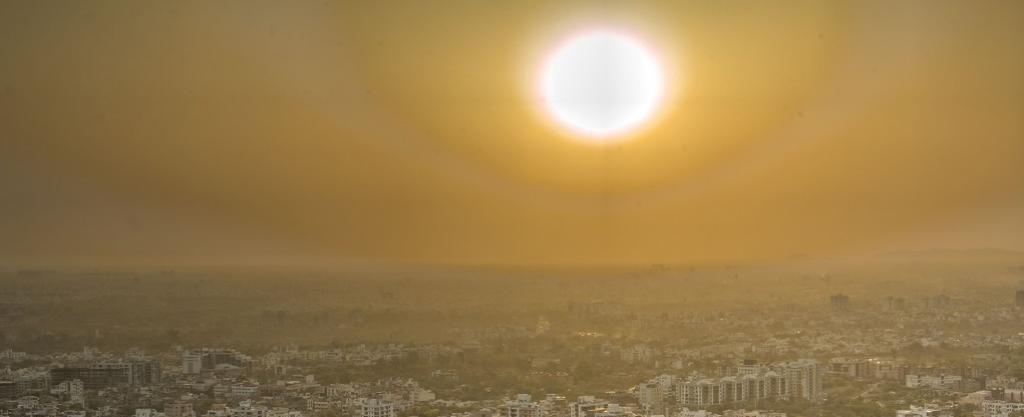

Experts believe if monsoon rains would have reached central India by June 10, it would not have been this hot



Cyclone Vayu and El Niño are responsible for the second-longest heatwave spell that many parts of India are experiencing, according to meteorologists. Temperatures are soaring even as the cyclonic activity and El Niño effect has delayed the monsoon.
On June 11, temperature in parts of Delhi crossed 48 degrees Celsius, while the highest maximum temperature was recorded in Churu (West Rajasthan) at 50.3 degrees Celsius. In several places across the country temperature crossed 45 degrees Celsius in the past few days.
Four elderly pilgrims travelling on a train from Agra to Coimbatore died on June 11 in Madhya Pradesh allegedly due to heat.
“The El Niño effect caused the westerlies blowing in from Pakistan and Rajasthan to heat up, which led to a prolonged dry spell and a delayed monsoon,” says Mahesh Palawat, chief meteorologist at Skymet Weather Services.
However, this phenomenon was exacerbated by the development of Cyclone Vayu. Monsoon hit Kerala on June 8, but, at the same time off shore trough developed along the western coast of India and turned into very severe cyclonic system Vayu that will make landfall in Gujarat on June 13.
“The off share troughs rarely develop into cyclonic systems, but this time it did and disrupted the progression of monsoon,” a scientist at Indian Institute of Tropical Meteorology (IITM) said on condition of anonymity.
“If monsoon would have reached central India by June 10, then it would not have been so hot now,” the IITM scientist added.
The cyclones that develop in the Arabian Sea impact the monsoon more than those in the Bay of Bengal because the monsoon winds enter the Indian Peninsula from the western coast along the Arabian Sea. This phenomenon of delayed monsoon due to the emergence of cyclonic system was also seen in 2015 when Cyclone Ashobaa had delayed the monsoon.
According to the India Meteorological Department, on June 11, maximum temperatures were markedly above normal (5.1 degrees Celsius or more) at most places in Punjab, Haryana, Chandigarh, Delhi, east Rajasthan, Madhya Pradesh and Vidarbha.
The weather anomaly was also reported at many places in west Rajasthan, Himachal Pradesh, Uttarakhand, Jharkhand and Chhattisgarh and at isolated places in Jammu & Kashmir, Saurashtra and Kutch and Telangana.
Another factor adding to the intensity of the heat wave is low soil moisture content due to a weak monsoon last year. “The low soil moisture is also adding to heat. In fact, we have seen that the year monsoon is weak it is followed by a year that has high number of heatwaves. Soil moisture has a role to play in this,” the scientist added.
We are a voice to you; you have been a support to us. Together we build journalism that is independent, credible and fearless. You can further help us by making a donation. This will mean a lot for our ability to bring you news, perspectives and analysis from the ground so that we can make change together.

Comments are moderated and will be published only after the site moderator’s approval. Please use a genuine email ID and provide your name. Selected comments may also be used in the ‘Letters’ section of the Down To Earth print edition.